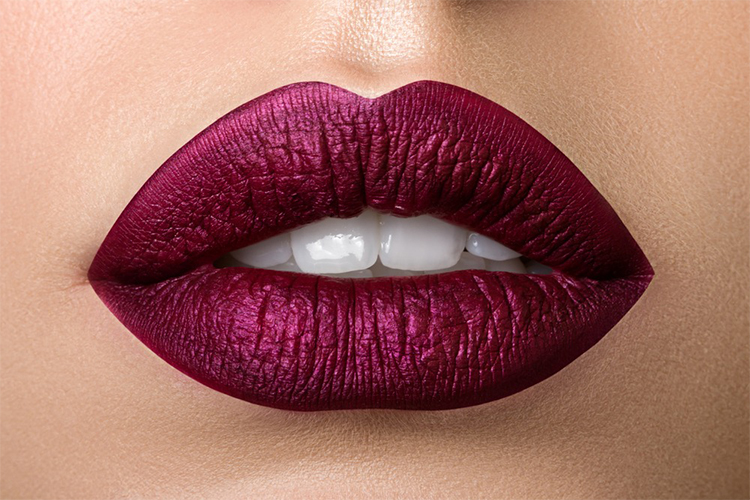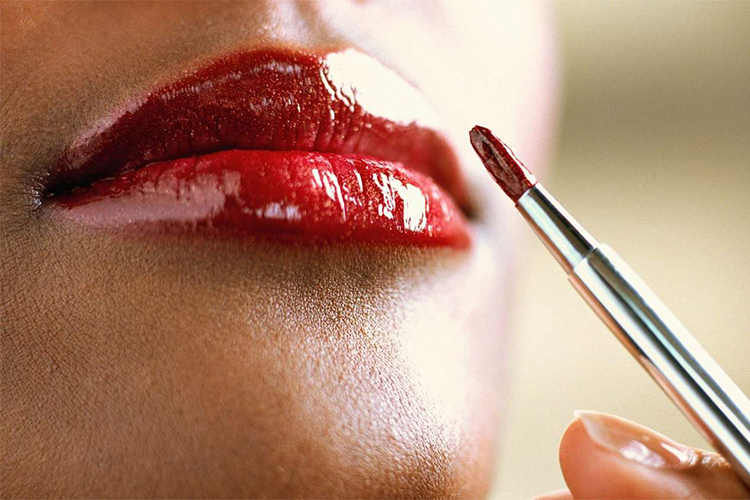Lipstick has a long and varied history that spans a variety of cultures and customs. It has been a common fashion accessory for centuries.
The earliest proof of lipstick traces all the way back to the old Egyptians, who utilized a blend of squashed bugs and carmine color to make lively shades of red. Lipstick wearing was not just for women; it was also done by men and women of different social classes.
Lipstick was considered a social status indicator in ancient Rome, with the color of the lipstick reflecting wealth and power. White and yellow lipsticks were popular during the Elizabethan era; red lipstick was reserved for actors and prostitutes.
Lipstick became a symbol of women’s liberation and empowerment in the 20th century, and suffragists were famous for wearing bright red lipstick on marches and protests. Due to a lack of raw materials, lipstick production was slowed down during World War II. However, after the war, new colors and shades began to appear, with Revlon leading the way in cosmetic innovation.

Lip colors became more natural in the 1960s and 1970s, with nude and pale pink shades becoming popular. Black lipstick and other unusual shades were introduced during the late 1970s punk movement, which focused on challenging conventional beauty standards.
The “nude lip” look was popularized by well-known celebrities such as Jennifer Aniston and Gwen Stefani in the 1990s and early 2000s, which saw a return to more conventional lipstick colors. In the late 2000s and early 2010s, the rise of influencer culture and social media led to an explosion of various lipstick trends and styles that emphasize individuality and self-expression.
Lipstick has been a significant part of fashion and cosmetic culture for thousands of years, with a rich and varied history that spans a variety of global cultures and traditions.
The historical backdrop of lipstick can be followed back to old Egyptian times, where it was involved by all kinds of people as an indication of magnificence and status. They scoured nature to make the main lipsticks utilizing red dirt, squashed subterranean insects, and carmine color. Lip color was used to indicate social class in ancient Rome, with the wealthy opting for brighter hues made from elderberry juice or crushed mulberries. Lipstick became a symbol of modesty and virtue during the Elizabethan era, and women were encouraged to keep their natural lip colors.

The solid, wax-based lipsticks of the past were replaced by colored lip ointments in the 19th century. The first metal lipstick tube was created in 1915, and the “twist-up” lipstick tube was patented a few years later, paving the way for contemporary lipstick packaging.
The 1920s denoted a defining moment throughout the entire existence of lipstick when new brilliant and extraordinary shades of lipstick arose. The testimonial development involved red lipstick as an image of opportunity and freedom, and ladies started to wear lipstick as a type of self-articulation and resistance to conventional orientation jobs. Darker tones emerged in the 1930s, while matte finishes and well-known colors like coral and crimson red emerged in the 1940s and 1950s.
Natural lip colors became more popular in the 1960s and 1970s. Nude and pale pink shades were worn as a statement of liberation from traditional feminine beauty standards. The 1980s saw a return to bolder, brighter lip colors like metallic, fuchsia, and peach hues. Dark, almost-black lip colors became popular during the grunge era of the 1990s, and matte liquid lipsticks became popular in the 2000s.
Lipstick is still a big part of fashion and pop culture all over the world, and new trends come out every season. There is a lipstick color and formulation to suit every taste, ranging from traditional red hues to bold and unconventional colors like blue and green.

Yes, lipstick has a fascinating and varied history that spans thousands of years and a variety of cultures and practices. Lipstick has played a significant role in fashion, beauty, and self-expression from ancient Egypt and Rome to the present day, with its popularity and significance fluctuating over time.
Red clay, carmine dye, and crushed insects were among the natural ingredients used in the initial formulations of lipstick. In ancient Rome, a person’s social standing was often indicated by the color of their lipstick, with brighter hues being associated with the powerful and wealthy. While lipstick was viewed as a sinful indulgence during the Renaissance, many people avoided using it altogether, Victorian England favored a more subdued and natural appearance.
Lipstick did not begin to develop into the product that it is today until the early 20th century. The first metal lipstick tube was introduced in 1915, and the “twist-up” lipstick tube was patented several years later, making application simpler and more portable. As women began to embrace more daring and unconventional styles, the 1920s saw the rise of lipstick shades that were more vibrant, such as bright red and orange.
Throughout the long term that followed, lipstick kept on being a famous style frill and a method for self-articulation. Lipstick played a significant role in defining fashion and beauty trends throughout the 20th century, from the subdued hues of the 1950s to the bright and daring hues of the 1980s.
Today, lipstick stays a well known restorative thing, with a large number of shades, plans, and styles accessible for clients to look over. Lipstick continues to provide women and men with a means to express themselves and enhance their natural beauty in a way that is both timeless and enduring, whether it is a classic red shade, a bold and daring black shade, or a more natural-looking nude.
In conclusion, the evolution of beauty standards, cultural traditions, and individual expressions of personality and identity are all reflected in the fascinating and multifaceted history of lipstick in fashion. It has unquestionably had a significant impact on the fashion and cosmetics industries and will continue to do so for many generations to come.
All in all, the historical backdrop of lipstick in design has been a developing one, with various varieties and styles acquiring prominence at various times. Lipstick has been an integral part of fashion and beauty culture all over the world, from ancient Egyptian carmine dyes to contemporary matte lipsticks. While excellence guidelines and patterns might go back and forth, the ageless charm of lipstick proceeds to enamor and rouse people all over the planet.

